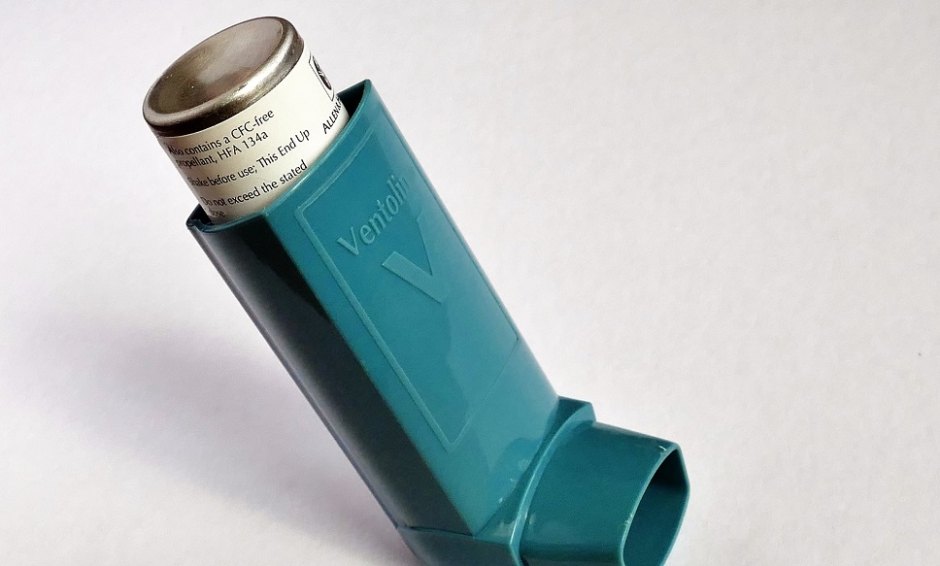United Kingdom, November 17, 2016 – The European Academy of Allergy and Clinical Immunology (EAACI) hosts today in Manchester the 3rd International Severe Asthma Forum(ISAF), focusing exclusively on severe asthma. From 17–19 November 2016, ISAF will bring together scientists and clinicians, doctors and key opinion leaders to facilitate the translation of emerging discoveries into clinical practice therapies, and to try and address some of the unmet clinical needs in the field of severe asthma.
Building on the success of previous ISAF meetings, this year’s edition will focus on pediatric and adult patients with severe asthma, in light of new developments in the area.
The debate will start with an overview of the latest biological treatments for severe asthma, provided by Professor Zuzana Diamant and Professor Paul O’Byrne. The Vice President of the European Respiratory Society, Professor Mina Gaga, will also participate in the debate, discussing how biomarkers can assist in the treatment of severe asthma. Another key speaker will be EAACI’s past President Professor Nikos Papadopoulos who will provide insights into the role of viral infections in children with severe asthma.
The importance of tackling the socio-economic risks associated with asthma
Asthma is a major public health problem affecting 300 million people around the world. Its prevalence and impact are particularly on the rise in urbanised regions and increasing worldwide, associated with environmental and lifestyle changes. In the United Kingdom (UK), 5.4 million people currently receive treatment for asthma. Of these, 1.1 million are children, a figure that places the UK among the countries with the highest prevalence rates of asthma symptoms in children worldwide.
With an expected surge in the world’s urban population by 2025, it is estimated that a further 100 million people worldwide will suffer from asthma, adding to the current number of sufferers. This will result in a substantial increase in health care costs caused by the disease, which in Europe alone reached 1,583 EUR per patient in 2012.
Nowadays, governments and the general public face huge direct (e.g. healthcare expenditure) and indirect costs (e.g. lost work and school days) in dealing with asthma, with major macroeconomic effects due to health-care costs, loss of productivity and patient absenteeism. This is particularly the case for patients suffering from severe asthma.
The challenge of dealing with severe asthma
Severe asthma is defined as asthma that requires high doses of combination treatments to prevent the disease from becoming ‘uncontrolled’, or that remains uncontrolled despite optimal therapy. Although patients with severe asthma comprise 5–10% of the asthmatic population, they are accountable for 80–90% of asthma healthcare expenditure. In comparison to mild or moderate asthma, severe asthmatics are 15 times more likely to use emergency services and 20 times more likely to be admitted to hospital. This leads to a disproportionate use of health-care resources through hospital admissions, unscheduled primary care visits and emergency room visits.
Despite the health and economic challenges posed by severe asthma, an improved care of sufferers remains a major unmet medical need. Another need to be addressed is the lack of specific non-invasive biomarkers that would aid the clinician in phenotyping patients and thus allow for specific treatment. Doing this will require a combination of various genetic, biochemical, immunologic and proteomic techniques. Currently available biomarkers for severe asthma include Th2 immunity markers, eosinophils counts in the sputum and blood, neutrophils in sputum, periostin, and exhaled nitric oxide. However, these biomarkers are not readily available for many patients in many places dealing with severe asthma.
Recent developments in the field of severe asthma
In recent years, there has been a tremendous increase in the scientific knowledge on severe asthma which has culminated in the development of novel therapies. New medication such as anti-cytokine antibodies and new approaches such as thermoplasty have been introduced into the therapeutic armamentarium. Thermoplasty is aimed at reducing the amount of smooth muscle in the airway wall by radiofrequency energy. A recent study has shown that it selectively down-regulates structural abnormalities involved in airway narrowing and bronchial reactivity, particularly ASM, neuroendocrine epithelial cells and bronchial nerve endings.
Last week, the University of Leicester, England, announced a revolutionary finding that could help to improve the health of severe asthma patients. The study, published in EAACI’s journal Allergy, discovered the presence of increased amounts of a protein – called PP5 – in the lungs of severe asthma patients. The researchers1 found that this protein blocks the effects of the best medicines in improving the condition of severe asthma. Understanding the mechanisms driving this increased presence of PP5 in severe asthmatics could lead to novel treatments.
“It is an exciting time to work in the field of severe asthma, with novel therapies, developed from an understanding of the pathophysiology of asthma, on the horizon. Nevertheless, these treatments will not be suitable for everyone and there is much we have yet to understand about the collection of diseases (or endotypes) we manage under the asthma umbrella term”, commented Professor Angela Simpson, Chair of ISAF 2016.
“Even though our understanding of severe asthma has increased immensely in recent years, there is still much to learn and a long way to go before high cost treatments can be prescribed for patients who are most likely to benefit from them. The discovery of new biomarkers will open the door to personalised treatment for various forms of severe asthma, enabling doctors to select the best treatment for the first time”, added Professor Ömer Kalayci, also Chair of ISAF 2016.
The full meeting programme is available on the ISAF website. Abstracts presented during the meeting are published online on the EAACI website.
About EAACI
The European Academy of Allergy and Clinical Immunology (EAACI) is a non-profit organisation active in the field of allergic and immunologic diseases such as asthma, rhinitis, eczema, occupational allergy, food and drug allergy, and anaphylaxis. EAACI was founded in 1956 in Florence and has become the largest medical association in Europe in the field of allergy and clinical immunology. It includes over 9,300 members from 121 countries, as well as 54 National Allergy Societies.
Over the past 60 years, EAACI has dedicated its resources to improving the health of people affected by allergic diseases and asthma. With experience and knowledge in allergy science, EAACI is the primary source of expertise in Europe and beyond for all aspects of allergic diseases and asthma.
References
- Chachi L, Abbassian M, Gavrila A, Alzahrani A, Tliba O, Bradding P, Wardlaw AJ, Brightling C, Amrani Y. ‘Protein phosphatase 5 mediates’
Media Contact
EAACI Headquarters
Hagenholzstrasse 111, 3rd Floor
8050 Zurich – Switzerland
Email: [email protected]
Tel: + 41 44 205 55 32
Web: www.eaaci.org








